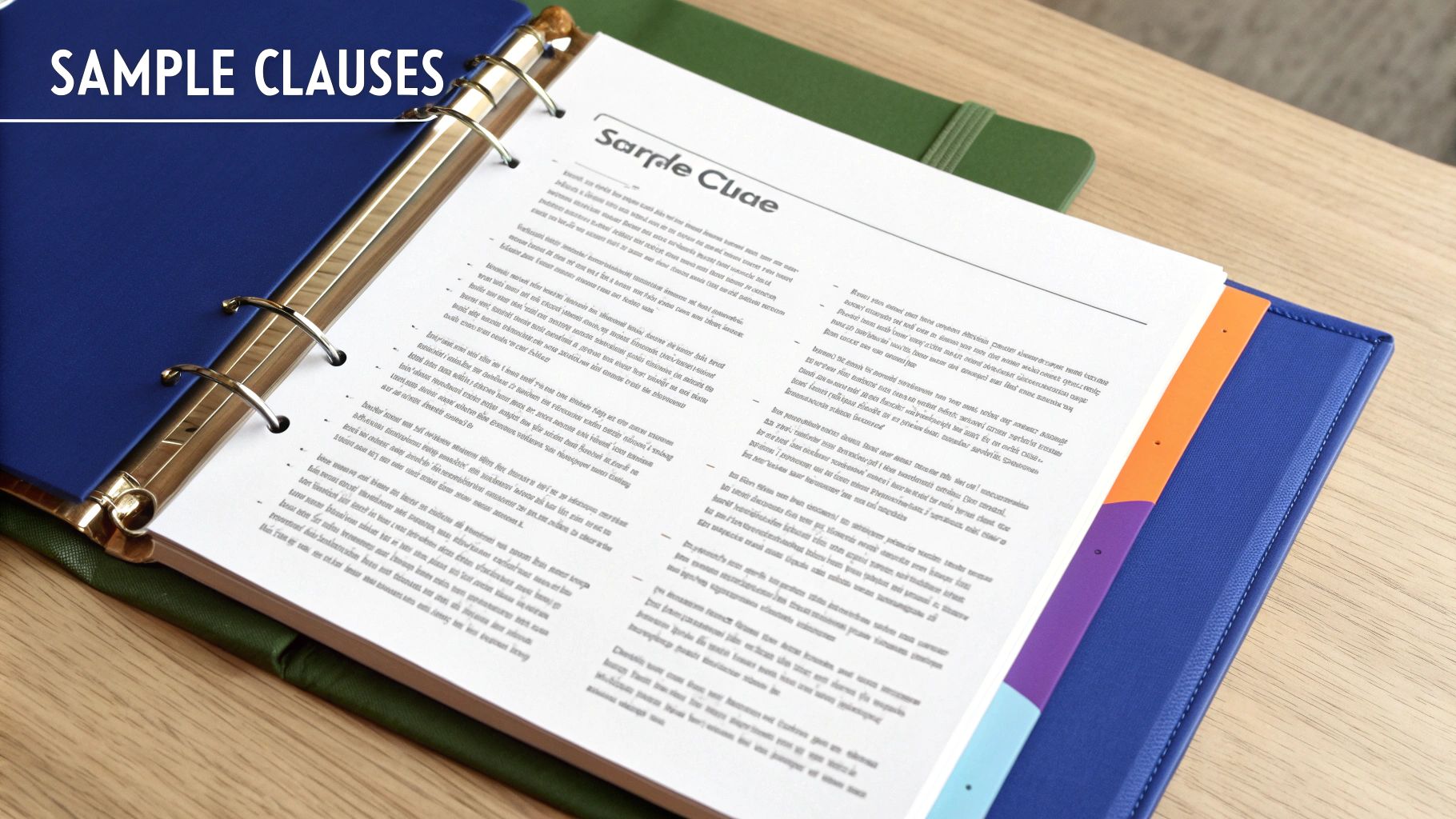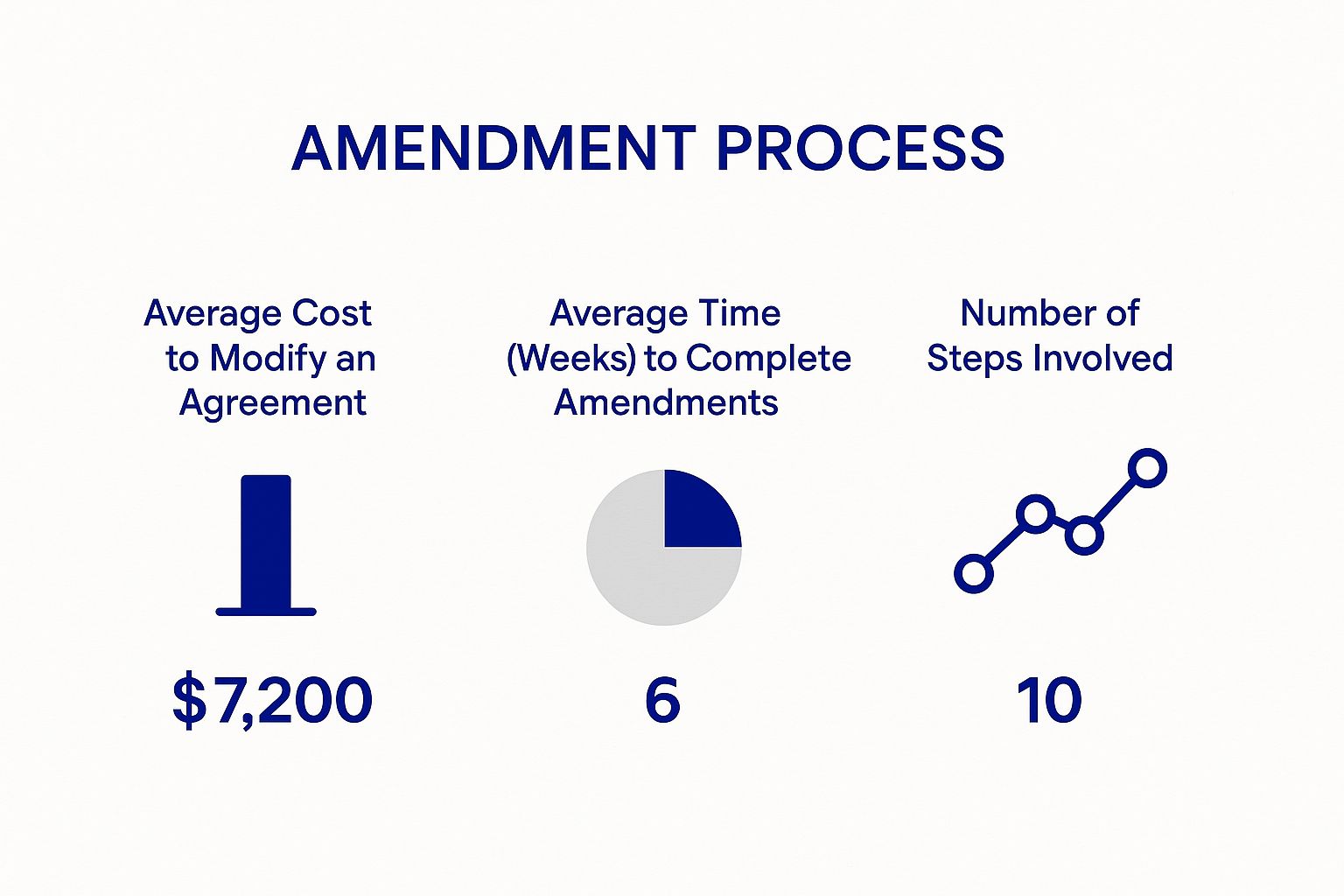Free NY Separation Agreement Template Download & Tips
Ok ya’ll, so if you are here right now you probably seek the template that I offered in the article title. Before I share it with you, I would highly recommend that you don’t play legal games and read this whole article about separation agreements so that you don’t mess up. However, if you don’t want to take my sound and awesome advice – it’s at your own risk. So here is the link should you choose to just jump to the template: With all that said, now you can go ahead and download a separation template now. But again, better you read this all and then scroll back up.
Hello to my fabulous readers. Did you know that prior to getting officially divorced you will need a separation agreement? Divorce is an ugly, nasty, devastating and every other nasty word you can think of – thing. That’s why we are here to make things easy for you at this sensitive time and give you the “easy button” version of divorce. A separation agreement template offers a valuable starting point, providing much-needed clarity during this difficult time. These templates serve as a guide, helping you and your spouse negotiate important matters like asset division, spousal support, and child custody. They provide a structured framework for these complex issues, leading to a smoother, more organized separation process. Before drafting your agreement, it’s helpful to have a template for guidance. You can begin by creating a solid outline. If you are just here for the free template (lol) just scroll all the way to the bottom for a quick link to the templates.
It’s important to distinguish between a separation agreement and a divorce decree in New York State. While both address similar topics, a separation agreement is a contract created before the divorce is finalized. This agreement lays out the terms of the separation and can be used as the foundation for the final divorce decree. A divorce decree, on the other hand, is a court order that legally dissolves the marriage. It incorporates the terms of the separation agreement, or establishes new terms if an agreement wasn’t reached.
Benefits of Using a Separation Agreement Template
Using a separation agreement template offers several advantages. A well-drafted template can significantly reduce legal expenses related to attorney consultations and drafting. The structured format also helps minimize conflict by providing a clear path for negotiations. This organized approach offers a sense of control and predictability during a highly emotional time.
Templates also make the negotiation process more efficient, helping couples reach agreements faster. This efficiency is especially important given how common divorce and separation are. In fact, separation agreement templates are key to formalizing arrangements in many family law cases. In the United States, nearly 900,000 divorces occur each year, highlighting the need for legally sound separation agreements to manage issues like asset division, child custody, and support. Approximately 50% of first marriages end in divorce, a figure that increases to 60% for second marriages and 73% for third marriages. This underscores the importance of clear and accessible separation agreement templates for navigating these complex legal matters efficiently.
Key Considerations When Choosing a Template
When selecting a template, make sure it’s specifically designed for New York State. New York has specific legal requirements that your agreement must meet to be enforceable. Consider the specifics of your situation. If you have substantial assets, intricate financial arrangements, or disputes regarding custody, a more comprehensive template may be necessary.
Finally, remember that while a template is a great starting point, it needs to be tailored to your particular circumstances. This customization ensures the agreement accurately reflects your unique family dynamics and finances, making it a practical and legally sound document. Carefully considering these factors will help you choose a template that best suits your needs and provides a strong foundation for your separation agreement.
Essential Components Every NY Separation Agreement Must Include
A separation agreement template offers a starting point, but a truly effective agreement in New York demands careful attention to detail. The right components, properly addressed, transform a generic template into a legally sound, personalized document.
Property Division in New York Separation Agreements
New York is an equitable distribution state. This means marital property isn’t always split 50/50. Instead, courts strive for a fair division, considering each spouse’s contributions to the marriage.
Your agreement must clearly identify and categorize all assets and debts. It should specify whether each item is separate property (owned before the marriage) or marital property (acquired during the marriage). Clearly defining marital property is crucial, as its division is a major focus in New York separation agreements.
Child Custody and Support Arrangements
For parents, custody and support provisions are paramount. Your agreement should outline both legal custody (decision-making power) and physical custody (where the child lives).
A well-drafted agreement details living arrangements, including a visitation schedule. It also addresses child support, adhering to New York’s guidelines and considering each parent’s income and the child’s needs. These details are vital in New York, where courts prioritize the best interests of the child. For more information, read our blog post on navigating child custody in New York.
Spousal Maintenance (Alimony)
Spousal maintenance, or alimony, is often a key component. The agreement should specify whether alimony will be paid, the amount, payment duration, and any conditions for modification or termination.
New York law offers guidelines for calculating spousal maintenance, considering the length of the marriage and each spouse’s earning potential. Addressing alimony proactively can prevent future disputes. Your local divorce attorneys can help you create a fair and legal alimony agreement.
Other Important Provisions for NY Agreements
Beyond the core elements, other provisions are crucial for a comprehensive agreement in New York:
- Health Insurance: Specify coverage for each spouse and any children.
- Life Insurance: Address whether life insurance policies need to be maintained for future obligations.
- Debt Allocation: Clearly outline responsibility for existing debts, including mortgages, credit cards, and loans.
- Tax Implications: Consider the tax implications of property division and spousal maintenance to minimize potential burdens.
The following table outlines key sections of a comprehensive separation agreement.
Essential Components of a Separation Agreement
| Component | Purpose | Legal Considerations |
|---|---|---|
| Property Division | Determines how assets and debts acquired during the marriage are divided. | New York follows equitable distribution principles. |
| Child Custody & Support | Establishes legal and physical custody arrangements, as well as child support obligations. | Courts prioritize the best interests of the child. |
| Spousal Maintenance (Alimony) | Determines whether and how much alimony will be paid. | New York law provides guidelines for calculating alimony. |
| Health Insurance | Specifies who will provide health insurance coverage. | COBRA and other options may be considered. |
| Life Insurance | Addresses the maintenance of life insurance policies to secure future obligations. | Beneficiary designations may need to be updated. |
| Debt Allocation | Outlines responsibility for existing debts. | Debts incurred during the marriage are typically considered marital debt. |
| Tax Implications | Addresses potential tax burdens related to property division and alimony. | Consulting with a tax advisor is recommended. |
This table summarizes the important parts of a separation agreement, reminding us to consider each element carefully.
Addressing these elements thoroughly promotes clarity and prevents future conflict. This ensures your separation agreement becomes a robust, legally sound document that protects your interests.
Meeting New York’s Legal Requirements: Enforceability Matters
A separation agreement template offers a helpful starting point, but its real worth depends on its enforceability. Specific legal requirements in New York determine whether your agreement will hold up in court. Grasping these requirements is vital to ensure your agreement isn’t just a costly, ultimately worthless, document.
Key Elements of Enforceability in New York
Several factors influence the enforceability of a separation agreement in New York. Proper execution formalities, such as signatures witnessed by a notary public, are crucial. New York also requires full financial disclosure from both parties. This openness promotes fairness and prevents future disputes based on undisclosed assets or misrepresented finances. When creating a separation agreement, consider its impact on your overall estate planning.
Additionally, the agreement’s provisions must align with New York’s public policy. Certain clauses, like those that unfairly limit a parent’s access to their child or waive future child support adjustments, could be deemed invalid. For example, agreements severely limiting a parent’s role in their child’s life often clash with New York’s emphasis on the “best interests of the child” and might be rejected by the courts. This focus means agreements lacking suitable arrangements for children’s needs can be successfully contested.
Navigating New York’s Specific Requirements
New York courts examine certain provisions more closely than others. Child-related issues, particularly, undergo strict review under the “best interests” doctrine. Judges carefully assess custody arrangements, visitation schedules, and child support terms to guarantee they adequately safeguard the child’s well-being. Likewise, spousal maintenance provisions are evaluated based on New York’s statutory factors, confirming they reflect a fair and appropriate result considering the marriage’s duration and each party’s financial status.
The enforceability of your separation agreement also depends on how it interacts with eventual divorce proceedings. While a separation agreement can be integrated into a final divorce decree, it isn’t always guaranteed. A court can modify terms—especially regarding child support or custody—if they are no longer suitable for the child’s current needs or if there’s a significant change in a parent’s circumstances. This emphasizes the importance of creating an agreement that anticipates possible future changes and includes mechanisms for adjustments.
Furthermore, the demand for separation agreement templates is connected to divorce trends and statistical interpretations of divorce. The United States has a crude divorce rate of roughly 2.5 per 1,000 population, but a more accurate refined divorce rate is about 14.9 per 1,000 married women. This figure reflects the population facing the risk of divorce and emphasizes the need for personalized separation agreements that accommodate varying laws and jurisdictions, particularly due to the complexities of divorce law.
The Difference Between Approved and Challenged Agreements
Initial approval of a separation agreement doesn’t guarantee future challenges. Agreements based on incomplete disclosure, coercion, or unreasonable terms are particularly susceptible. For instance, if one party later proves they signed under pressure or without full knowledge of the other party’s finances, a court could invalidate it.
Thoroughly considering New York’s legal requirements during the drafting process significantly boosts the likelihood of a durable separation agreement. This proactive strategy protects your legal rights and provides stability as you transition. This proactive approach, coupled with regular reviews and required updates, can save substantial time, money, and stress down the road. Consulting an experienced New York divorce attorney is a worthwhile investment to ensure your separation agreement is legally sound and serves your best interests.
Customizing Your Template: From Generic to Specifically Yours
A generic separation agreement template offers a solid foundation, but it’s rarely enough to address the intricacies of a real-life separation in New York. To truly make it effective, you need to personalize it. This means adapting the standard language to create provisions that accurately reflect your family’s specific needs and financial reality.
Gathering and Organizing Financial Information
New York courts require comprehensive financial documentation. Begin by collecting all pertinent financial records. This includes bank statements, tax returns, pay stubs, and investment account summaries.
This detailed information is essential for accurately identifying assets, debts, and income streams. Organizing this information clearly helps ensure full financial disclosure, a key factor in making your separation agreement enforceable under New York law.
Identifying Assets Requiring Specialized Treatment
Some assets demand specialized handling in a separation agreement. These can include retirement accounts, businesses, and real estate. For instance, dividing a 401(k) requires a Qualified Domestic Relations Order (QDRO), a specific legal document recognized by New York courts.
Similarly, valuing and dividing a business often requires a professional appraisal, especially in New York. Businesses established during the marriage are generally considered marital property and are subject to equitable distribution. Meticulously addressing these complex assets helps prevent future conflicts and ensures compliance with New York’s specific rules. For more information, see our blog post on property division in divorce.
Developing Workable Custody Arrangements
For parents, establishing a workable custody arrangement that prioritizes the children’s best interests is paramount in New York. This involves outlining legal and physical custody, visitation schedules, and holiday plans.
Consider the children’s ages, school schedules, and extracurricular activities. A flexible and practical custody plan that addresses these factors helps minimize disruptions to children’s lives both during and after the separation. For additional guidance, see our child custody resources.
Negotiation and Documentation of Special Circumstances
Effective negotiation is essential for reaching a mutually agreeable separation agreement. This involves clearly articulating your needs and priorities while remaining open to compromise.
Documenting special circumstances, like health issues, unique childcare needs, or career changes, is also vital in New York. These provisions tailor the agreement to your specific situation, improving its fairness and practicality.
Balancing Detail and Clarity in Your Agreement
While detail is important, clarity is equally crucial. Use clear language and avoid overly complex legal jargon. This helps ensure both parties understand the agreement’s terms, reducing the likelihood of future misunderstandings.
Addressing potential future events, such as job loss or relocation, also contributes to a robust and enduring agreement. This proactive approach, favored by New York courts, promotes stability and reduces the need for future modifications.
Avoiding Critical Mistakes: What NY Attorneys See Most Often
A well-drafted separation agreement template offers a helpful starting point. However, even the best template can’t prevent common errors that could jeopardize your agreement’s validity in New York. Oversights regarding specific language, proper execution, or full financial disclosure can lead to legal challenges, sometimes years later. This can cause significant financial and emotional hardship.
Vague Language and Unintended Consequences
One of the most frequent issues New York attorneys encounter is the use of vague or ambiguous language. What appears clear during the initial drafting process can become a major point of contention later on. For instance, a clause stating one spouse will pay “reasonable household expenses” lacks necessary specificity. The definition of “reasonable” is subjective and open to interpretation, which can easily lead to disputes. Similarly, unclear language about dividing assets can result in expensive court battles.
Child Support and Custody Issues Specific to New York
Child support calculations in New York must adhere to specific state guidelines. Even unintentional deviations from these guidelines can trigger an automatic review and potential modification by the court. Custody arrangements also must align with New York’s “best interests of the child” standard. Agreements that don’t adequately address a child’s physical, emotional, and educational needs might be deemed unenforceable.
Overlooked Tax Implications
Failing to consider the tax implications of property division and spousal maintenance is another common oversight. Transferring certain assets can trigger capital gains taxes, creating an unexpected financial burden. Overlooking these potential tax consequences can significantly impact the overall fairness and practicality of the agreement.
The infographic below illustrates the complexity, time commitment, and potential costs associated with amending a separation agreement.
As you can see, modifying an existing agreement requires significant time and money, emphasizing the importance of accuracy and precision from the start. Careful planning and attention to detail during the initial drafting process can ultimately save significant resources.
Problematic Provisions Under New York Law
Certain issues frequently cause problems under New York law. Incorrect language regarding pension division can lead to difficulties when actually dividing the asset. Unenforceable restrictions on future modifications can hinder the ability to adapt the agreement to changing circumstances. For further information on long-term financial implications, see our blog post on property division in divorce.
Before creating a separation agreement, it’s wise to review common pitfalls and how to avoid them. The following table offers guidance on preventing potential issues:
Common Separation Agreement Mistakes and Their Consequences
This table outlines frequent errors made when drafting separation agreements and explains the potential consequences of each mistake.
| Common Mistake | Potential Consequences | How to Avoid |
|---|---|---|
| Vague or ambiguous language | Disputes, litigation, and unintended interpretations. | Use precise and clearly defined terms. Consult with an attorney. |
| Incorrect child support calculations | Court-ordered modifications and financial penalties. | Adhere to New York’s child support guidelines. Seek legal counsel. |
| Custody arrangements not in child’s best interest | Agreement deemed unenforceable; potential loss of custody rights. | Prioritize the child’s well-being. Consult with a family law attorney. |
| Overlooking tax implications | Unexpected tax liabilities and financial strain. | Consult with a financial advisor or tax professional. |
| Improper pension division language | Difficulties in dividing the pension asset; potential litigation. | Use legally sound language. Consult with an attorney specializing in pension division. |
| Unenforceable future modification restrictions | Inability to adapt the agreement to changing circumstances. | Ensure modifications clauses comply with New York law. Consult with an attorney. |
This table highlights the critical need for clarity, accuracy, and adherence to New York law in separation agreements. Avoiding these common mistakes can save you significant time, money, and emotional distress.
Prevention Strategies and Alternative Approaches
These mistakes are often avoidable by using precise language, consulting with financial and tax professionals, and ensuring compliance with New York’s specific legal requirements. Consulting with an experienced New York family law attorney is essential. They can identify potential problems and suggest alternative solutions that meet both legal standards and your individual needs. Our World in Data provides interesting statistics on divorce rates and marriage longevity. These trends impact how separation agreements are structured. Consulting with a legal professional ensures your agreement reflects current laws and practices.
When to Call a Professional: DIY Limits in New York
While a separation agreement template can be a helpful starting point, it’s important to understand its limitations. Especially in New York, certain circumstances require the expertise of a qualified legal professional. Knowing when to seek guidance can save you time, money, and unnecessary stress.
Situations Requiring Legal Counsel in New York
Some situations almost always require the involvement of a New York attorney.
- High-Value Assets: Dividing significant marital property, such as real estate, investments, and complex financial holdings, requires careful legal consideration. This ensures equitable distribution under New York law.
- Business Ownership: If one or both spouses own a business, valuing and dividing it fairly becomes considerably more complicated. An attorney can navigate these complexities.
- Complex Retirement Accounts: Splitting pensions and other retirement accounts requires specialized knowledge of New York’s regulations. This often necessitates a Qualified Domestic Relations Order (QDRO).
- Contentious Custody Matters: Disputes involving child custody, visitation, or child support require skilled legal representation. An attorney can protect your parental rights and ensure the child’s best interests are prioritized.
For example, determining the value of a business acquired during the marriage can be quite complex. An attorney can help ensure the business valuation follows the proper legal framework and that your business assets are protected.
Spectrum of Professional Help and Costs in New York
New York offers a range of professional services, each with varying costs. Full representation, where an attorney handles all aspects of your case, is typically the most expensive. Limited scope representation, where an attorney advises on specific issues or reviews a drafted agreement, is a more affordable alternative. Mediation, where a neutral third party helps facilitate agreement, offers a cost-effective way to resolve some disputes.
Choosing the Right Professional
Finding a legal professional experienced in New York family law is crucial. Look for an attorney specializing in separation agreements. Ask about their experience with cases similar to yours, and seek referrals or testimonials. When considering mediation, inquire about the mediator’s expertise with separation agreements and their familiarity with New York law.
Choosing the right professional can make the process smoother and help ensure the best possible outcome under New York law. This means setting realistic expectations regarding timeframes and potential outcomes. While a quick resolution is ideal, complex cases can take longer. An experienced attorney can provide a more accurate estimate based on your specific situation.
Moving Forward: Making Your Agreement Work For The Long Term
A separation agreement isn’t just a document; it’s the blueprint for your future in New York. This section offers practical guidance on implementing your agreement and navigating the complexities of New York law.
Maintaining Workable Relationships and Payment Systems
A successful long-term separation depends heavily on maintaining workable relationships, especially when it comes to co-parenting. Open communication, mutual respect, and a willingness to compromise are vital. This collaborative approach can significantly reduce future conflicts and make transitions smoother as life changes. For more information on co-parenting, check out our blog post on child custody in New York.
Establishing reliable support payment systems is also key to avoiding disputes. Direct deposit, online payment platforms like PayPal, or other automated systems can streamline the process and guarantee timely payments. Maintaining clear records of each transaction offers both parties transparency and accountability. This proactive approach minimizes potential misunderstandings about financial responsibilities.
Handling Disagreements and Modifications
Disagreements are inevitable, even with the most thorough separation agreement. Learning to resolve these disagreements constructively, without resorting to court, is crucial. Mediation can be a valuable tool for resolving disputes outside the courtroom, preserving relationships, and minimizing legal fees. New York encourages amicable resolutions, and using these alternative dispute resolution methods shows your commitment to collaboration.
Life is full of changes, and your separation agreement needs to adapt to these changes. Knowing when and how to modify your agreement under New York law is essential. While minor changes can be handled through mutual consent, significant alterations often require formal modification through the court. New York courts will only approve modifications if they are in the best interests of any children involved or if there’s been a substantial change in circumstances for one or both parties. This ensures revisions reflect the family’s evolving needs and maintains fairness. For help with modifications, consult your choice family law firm.
A well-drafted separation agreement offers structure and stability, allowing you to move forward with confidence. While separation presents difficulties, a solid agreement, combined with a collaborative approach and an understanding of New York’s legal procedures, empowers you to navigate these challenges effectively. Seeking legal counsel in New York is paramount to ensure your agreement safeguards your interests and builds a strong foundation for your future.


Free Legal Consultation
98-14 Queens Blvd




